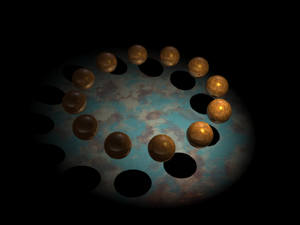|
Taras Kowaliw, Peter Grogono, Nawwaf Kharma
The Bluenome Model of
Development is introduced. The Bluenome model is a developmental model
of Artificial Morphogenesis, inspired by biological development,
instantiating a subset of two-dimensional Cellular Automata. The
Bluenome model is cast as a general model, one
which generates organizational topologies for finite sets of component
types, assuming local interactions between components. Its key feature
is that there exists no relation between genotypic complexity and
phenotypic complexity, implying its potential application in
high-dimensional evolutionary problems. The Bluenome model is first
applied to a series of application-neutral experiments, in which it is
shown experimentally that it is capable of producing robust agents in a
reasonable amount of computation. Next, it is applied to an application
involving the design of embedded agents. This second series of
experiments contrasts the Bluenome model against a model in which there
exists a bijective relation between genotype and phenotype, showing that
the Bluenome model is capable of performing as well or better in cases
of high phenotypic complexity. Additionally, genomes from the Bluenome
Model are shown to be capable of re-development in differing
environments, retaining many relevant phenotypic properties.
|

![]()


